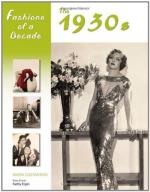|
This section contains 219 words (approx. 1 page at 300 words per page) |

|
Nothing symbolized the lack of public confidence in banking during the Depression more than the bank runs. Bank runs were spurred by fears that banks would go bankrupt, taking the savings of depositors with them. The mere hint of a bank closing often was enough to send depositors scrambling to withdraw their money, and banks, which did not keep enough cash on hand to cover all of their deposits, often then collapsed. Bank runs also reflected unsound banking practices. During the 1920s many banks had not acted in a responsible and hardheaded fashion. Some had lent money for dubious investments; others extended dangerously large credit to financial speculators. When the stock market crashed, many banks saw their assets evaporate; creditors liquidated what remained; depositors were left with nothing. Because few companies in the 1920s provided pensions for workers, many used the banks as a...
|
This section contains 219 words (approx. 1 page at 300 words per page) |

|




